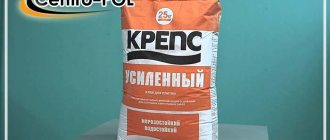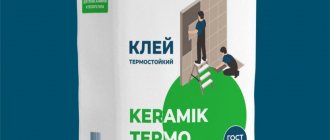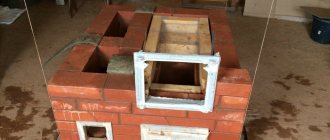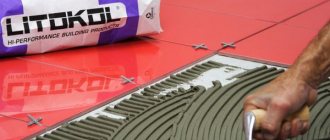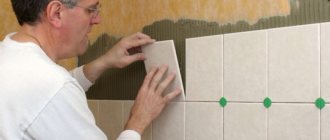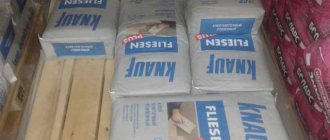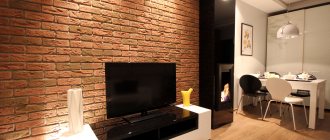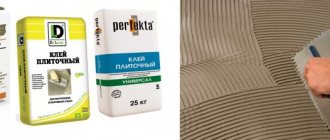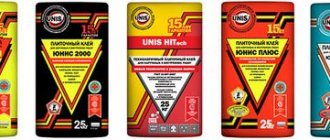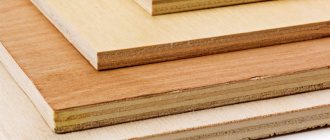One of the well-known names among tile adhesives is KREPS. Bright packaging attracts the eyes of buyers. It is necessary to understand which mixture among the variety presented, first of all, to pay attention to. KREPS “Reinforced” adhesive for tiles and porcelain stoneware has certain features that are worth talking about in more detail.
Brand information
The KREPS company began its activities in the late nineties, more than 20 years ago. Since that time, it has launched the production of dry mixtures used in construction. Today the company has the status of a federal manufacturer. There are two large factories in the Russian Federation, located in the Urals and St. Petersburg.
Among the products of this company, more than 50 types of goods can be distinguished. This list includes KREPS adhesive for tiles, main types of plaster, putties, dry mixtures with the main component of cement, special leveling solutions for damaged floor coverings and much more.
All products undergo strict testing before going on sale. Thanks to this, the risk for consumers of purchasing low-quality building materials is reduced to almost zero.
Preparing the base
Proper preparation of the base becomes an important condition for the use of mixtures of any kind. It is important to ensure that there are no such problems:
- Deformation changes;
- Irregularities;
- Changes.
Dirt and dust are completely removed, as are any traces of other building materials. Additional use of primer will also improve adhesion performance. This work is carried out twice if the bases are highly porous and absorbent. Then compliance with all requirements is guaranteed.
Additional use of primer will also improve adhesion performance.
Features and advantages of the KREPS brand
To find out what strengths dry adhesives from the KREPS company have, you need to consider their compositions.
Standard components are:
- Cement.
- Various modifiers.
- Sand.
- Additives for plasticization.
Before you start working, you need to prepare the adhesive mass. To do this, the dry powder is diluted with water according to the proportions indicated on the packaging.
If the solution is mixed correctly, it will have the specified technical characteristics of tile adhesive:
- Brand strength – M 75.
- Adhesive strength – 1 MPa.
- Frost resistance index – F 35.
KREPS tile adhesive under the “Reinforced” brand has parameters that are higher than those of dry mixes under the name “Standard”. In addition, after mixing the composition, you can work with it for 20 minutes longer. The reinforced composition tolerates temperature changes, thanks to this, you can work with it outdoors or at home when installing a “warm floor” system.
In addition to the improved characteristics presented above, KREPS “Strengthened” adhesive has other advantages.
These include:
- High frost resistance.
- Long-term moisture resistance.
- Economical due to low consumption.
- Sets quickly.
A separate group of adhesives is modified with additional additives to improve the basic characteristics. These can be fireproof substances, antifreeze.
Advantages and disadvantages
Kreps glue allows you to work where conventional solutions cannot cope. Due to the high quality of adhesion, the tiles will not slip even in the most extreme conditions. If you use adhesives with low or medium moisture resistance, frost resistance, or low elasticity, the adhesive joints will quickly collapse. This may cause the tiles to warp. The same applies to heat resistance: the use of simple products for laying heated floors leads to cracking of the seams after a short period of time. This is due to the expansion of ceramics when heated, whereas the adhesive does not expand.
Thus, the advantages of Kreps glue are as follows:
- preservation of properties with increasing, decreasing, temperature changes,
- economical use,
- enhanced strength,
- fast hardening,
- Suitable for all types of tiles and substrates,
- good thermal conductivity,
- high moisture resistance,
- the ability to use where other materials quickly deteriorate, as well as to work in the cold (for adhesives with antifreeze),
- fire resistance (for certain types of Kreps).
Glue has much fewer disadvantages. When working, you need to strictly follow the instructions and act quickly, because the glue hardens after a short period of time. It will be difficult for beginners to immediately control the process, the thickness of the layer, and its uniformity. This is especially important when laying large-format tiles, which, if the layer is too thin, will fall off over time, despite the high degree of adhesion.
Application area
KREPS “Reinforced” adhesive has improved technical characteristics. Thanks to this, the scope of its application is expanding. The mixtures can be used when finishing rooms with ceramic tiles and large porcelain stoneware slabs. This glue is suitable for working with natural or artificial stone.
KREPS adhesive composition is used for laying decorative coatings on various substrates:
- Concrete screeds (“warm floor”).
- Drywall, gypsum boards.
- Any types of plaster.
High levels of frost resistance and moisture resistance allow finishing of the external sides of buildings.
Types of KREPS adhesive for tiles
Tile adhesive of the KREPS line from one of the leading companies has many names. The corporation sells several items that have varied characteristics. We need to talk about them in more detail.
Main characteristics
This binder mixture is created specifically for porcelain stoneware and ceramic tiles. It consists of fractionated sand and cement. When combined with water, an elastic mass is formed. Reinforced creps is not afraid of moisture and water, has excellent adhesion and is resistant to frost.
This type of glue is suitable for exterior and interior decoration. It adheres well to cement, concrete, plasterboard, tongue-and-groove and gypsum boards. This mixture can be used for surfaces with high levels of heat transfer, for example, for facing a fireplace. Using Kreps reinforced with antifreeze additive, you can perform styling at temperatures down to -10 degrees. Despite the fact that the glue has excellent bonding characteristics, installation of tiles with an area of 400x400 or porcelain stoneware 8 mm thick at a height of 1 m will require additional fastening.
KREPS “Reinforced” 25 kg
KREPS “Reinforced” tile adhesive 25 kg, which can be found in any specialized store. Recommended for finishing work with ceramic tiles, porcelain stoneware slabs, and other decorative materials.
This tile adhesive is well suited for working both on the inside of walls and on the outside (outside of buildings). Designed for laying slabs on almost all vertical and horizontal prepared surfaces.
List of such places:
- Gypsum boards.
- Any types of plaster.
- Cellular concrete.
- Screeds (“warm floor”).
- Fireplace cladding.
- Drywall.
Specifications:
- The time until the solution hardens is 4 hours.
- The time period for adjusting the position of the tiles is 20 minutes.
- Temperatures for using the finished composition are from 0 to +25 degrees.
- Average consumption of KREPS “Reinforced” glue per 1 m2 ~ packaging per 8 m2.
Grouting work is carried out no less than 24 hours later. After grouting, the surface will be ready for use.
Types of glue Reinforced
Improved Kreps is available in several varieties:
- Reinforced glue. Good for heavy cladding. It features increased adhesion to tiles and substrates.
- Enhanced Express. It has the fastest drying time. Contains additives that accelerate drying. The surface can be loaded within a few hours (4-5).
- White. It has the typical characteristics of Enhanced, but additionally contains dyes that give the composition a white color. Used for glass, tiles, mosaics on walls and floors.
- Kreps Super. Has increased adhesion to mineral, glass, metal, and wooden surfaces.
KREPS glue “White reinforced” 25 kg
KREPS products with improved characteristics. Its key feature is white color. Due to this, it is used for laying glass tiles. Used for finishing work with ceramic and porcelain tiles. Due to its increased resistance to high and low temperatures, it is possible to use adhesive for screeds with installed “warm floors”.
Used for laying slabs on different surfaces. List of such places:
- Gypsum boards.
- Any plasters.
- Cellular concrete.
- Warm floor screeds.
- Drywall.
Specifications:
- The average consumption of the finished mixture is 2 kg per 1 sq.m.
- The time until the solution hardens is 4 hours.
- The time period for adjusting the position of the tiles is 15 minutes.
- Temperatures for using the finished composition are from 0 to +25 degrees.
Grouting work should be carried out after 2 days.
The solution is suitable for lining the internal walls of swimming pools, fireplaces, and external walls of buildings.
Cleansing
All used instruments must be washed with plain water. The old solution cannot be used to make a new composition, so you need to pour clean water every time.
Reviews
Most people consider this brand of glue to be a worthy analogue of foreign products. Its key feature is the ability to attach tiles with temperature changes, which is very important for heated floors or the outer cladding of a fireplace. Some reviews note that Kreps remains mobile longer and its lifetime in a sealed solution significantly exceeds that of its competitors. Among other things, it is quite easy to wash off tools and does not cause much discomfort when cleaning.
KREPS glue “Reinforced winter” 25 kg
To perform facing work, use tile adhesive “Winter” KREPS. Intended for laying ceramic tiles and porcelain stoneware slabs. The main value of the adhesive composition is the stability of the installation quality at low temperatures, as well as to the effects of dampness and moisture. Thanks to this, it is better suited than others for finishing buildings outside.
Used for laying slabs on a variety of surfaces. Which include:
- Gypsum boards.
- Different types of plaster.
- Cellular concrete.
- Warm floor screeds.
- Drywall.
Specifications:
- The average consumption of the finished mixture is 2 kg per 1 sq.m.
- The time until the solution hardens is 4 hours.
- The time period for adjusting the position of the tiles is 15 minutes.
- Temperatures for using ready-made glue are from -10 to +25 degrees.
After 24 hours it is necessary to grout the joints. It is allowed to use the finished surface no earlier than after 24 hours.
Features of enhanced solutions
The main ones have already been described earlier. Applicable to tiles made of artificial stone, porcelain stoneware, ceramics, and clinker bricks.
The reasons for work may be different:
- Plaster;
- From cellular concrete;
- Plasters on cement or cement-sand base;
- A type of cement screed;
- Concrete and reinforced concrete.
Kreps reinforced adhesive belongs to class C1T.
Applicable to tiles made of artificial stone, porcelain stoneware, ceramics, and clinker bricks.
CREPS “Super” 25 kg
The adhesive is allowed for finishing work outside premises, as well as inside buildings. Used for laying ceramic tiles and porcelain stoneware. The main feature of this adhesive composition is the presence of special polymers that improve the characteristics of tile adhesive.
Used for laying slabs on a variety of surfaces. List of such places:
- Gypsum boards.
- Different types of plaster.
- Cellular concrete.
- Metal, wood.
- Different types of plastic, glass plates.
- Screeds with “warm floor” systems.
- Drywall.
Specifications:
- The average consumption of the finished mixture is 25 kg per 8 sq.m.
- The time until the solution hardens is 4 hours.
- The time period for adjusting the position of the tiles is 20 minutes.
- Temperatures for using the finished composition are from +5 to +25 degrees.
Grouting should be done no earlier than 48 hours. After this, the surface is ready for use.
Preparation of the solution
Preparation involves taking about 6 liters of water for 25 kilograms of the mixture. Use a mixer with low speed, or mix everything by hand. You need to let the composition sit for 10 minutes, then repeat the mixing procedure. In a dry place on a stand, the material can be stored for up to 12 months, using only the original packaging.
Use a mixer with low speed, or mix everything by hand.
KREPS "Express" 25 kg
A cement-based dry mixture, which is recommended for quick finishing of ceramic and clinker tiles, porcelain stoneware. The composition is supplemented with special modifiers that improve technical characteristics. The glue is resistant to low temperatures and prolonged exposure to moisture.
Used for laying slabs on a variety of surfaces. Which include:
- Gypsum boards.
- Different types of plaster.
- Cellular concrete.
- Screeds with “warm floor” systems.
- Drywall.
Specifications:
- The average consumption of the finished mixture is 25 kg per 8 sq.m.
- The time until the solution hardens is 4 hours.
- The time period for adjusting the position of the tiles is 15 minutes.
- Temperatures for using the finished composition are from +5 to +25 degrees.
Seams must be treated after 24 hours. Before this period of time has expired, the surface cannot be used. As the name and technical data indicate, this composition will help save time when needed.
Storage
If the finished mixture is not consumed within 4 hours after preparation, it cannot be stored for long. The remainder in this case simply needs to be thrown away. 12 months is the maximum shelf life for the dry form of the powder, which has retained its original packaging. This does not affect how long the material will dry.
If the finished mixture is not consumed within 4 hours after preparation, it cannot be stored for long.
Glue KREPS “Basic” 25 kg
A cement-based dry mixture, which is intended for laying porcelain stoneware and ceramic tiles.
Porcelain stoneware slabs should not exceed 300x300 mm in size.
It is used for work both outside buildings and indoors. Used for laying slabs on various surfaces.
List of such places:
- Different types of plaster.
- Cellular concrete.
- Screeds with “warm floor” systems.
Specifications:
- The average consumption of the finished mixture is 25 kg per 8 sq.m.
- The time until the solution hardens is 4 hours.
- The time period for adjusting the position of the tiles is 10 minutes.
- Temperatures for using the finished composition are from +5 to +25 degrees.
Grouting of joints must be done after 48 hours.
However, use of the surface is allowed only after 72 hours.
Distinctive features of the manufacturer
Ceramics and stone, porcelain stoneware - these are just some of the materials for which Kreps glue is intended. The “reinforced” marking is given to those options that can withstand different operating conditions.
Example of distinctive characteristics:
- High adhesion rate;
- Increased level of strength;
- Compatibility with warm floors;
- Economical consumption;
- Fast hardening;
- Application for the outside of fireplaces;
- No sliding off the walls during finishing.
Reinforced glue is a type of dry composition. Contains particles up to 0.63 mm in size. The main components include modifying additives and plasticizers along with cement and sand.
The “reinforced” marking is given to those options that can withstand different operating conditions.
CREPS “Standard 0.85” 25 kg
Tile adhesive from the KREPS company, which is used for laying ceramic tiles and porcelain stoneware. Suitable for work both inside and outside buildings.
Porcelain stoneware slabs should not exceed 600x600 mm in size.
Used for laying slabs on certain surfaces. List of such places:
- Any types of plaster.
- Cellular concrete.
- Warm floor screeds.
Specifications:
- The average consumption of finished glue is 25 kg per 8 sq.m.
- Time until hardening is 4 hours.
- The time period for adjusting tiles is 10 minutes.
- Temperatures for using ready-made glue are from +5 to +25 degrees.
Grouting robots must be carried out after two days.
Operation of the finished base only after 3 days.
Varieties
"Kreps" has several modifications. All of them are used depending on operating conditions and type of coating. The difference between adhesives lies in the types of additives and their quantities, which determine the physical and mechanical properties. Here are the main types of glue:
- "Reinforced." It has a high level of adhesion, allowing you to lay heavy porcelain stoneware slabs and marble even on vertical bases.
- "Enhanced White." This glue differs only in its white color; other characteristics are similar to the previous product. In addition to white cement, it contains a dye of the same shade. Most often used for glass, mosaics, light tiles.
- "Enhanced Express". It is characterized by the highest rate of hardening, since it includes additives that accelerate drying (catalysts). After 4-6 hours you can use the surface.
- "Kreps Super" Designed to work with glass, mineral, wood, and metal base materials. This glue can also be used to create heated floors and polymer coatings. It is characterized by increased elasticity and enhanced adhesion.
As for brands and, the following are considered the best:
- Bergauf Keramik Pro. Produced in Russia. Can be used in rooms with high humidity. It has low consumption (up to 2.5 kg/sq. m.), a long period of pot life of the mixture, adhesion of more than 1 MPa, low water absorption rates - up to 1.5%. The product has low thermal conductivity, which is considered one of its disadvantages.
- "Perfecta Holder." This is a reinforced adhesive for ceramic tiles and porcelain stoneware. Suitable even for the installation of large-format slabs. It has great strength because it is reinforced with special fiber fibers. When covering a vertical surface with heavy tiles, the elements will not slip. Consumption is very low - only 1.5-2 kg/sq.m. m., frost resistance is enormous (50 cycles of freezing and defrosting). The downside is the high percentage of water absorption (3.5%).
- "Mixity." The adhesive is suitable for indoor and outdoor use, for rooms with any level of humidity. It has excellent fixing ability, so it helps to glue even the heaviest tiles. You can lay the glue in a thick layer (up to 1 cm), leveling the base.
Preparation and storage of KREPS solution
After choosing KREPS tile adhesive, you need to learn how to properly mix the dry mixture and store the unprepared composition in an already opened package. Before you begin preparing the working solution, you need to prepare the tools for mixing the mixture.
These include:
- Mixing container.
- Water, adhesive composition.
- Putty knife.
- Drill with mixer attachment.
Preparation of glue from the KREPS company:
- Fill the mixing container with water. The amount of liquid depends on how much finished tile adhesive you need to obtain. The proportions are indicated on the packaging.
- Pour the amount of dry mixture required according to the instructions into the water, and not vice versa.
- Using a drill or spatula, thoroughly mix the solution. There should be no lumps or dry areas of the mixture left.
- Wait 15 minutes, mix the composition again.
Prepare the solution immediately before use. After mixing, the finished adhesive must be used within 4 hours.
After this period of time, it will lose its adhesive (working) properties.
Cover the remaining dry mixture tightly and store in a dry place.
Why is reinforced glue better than regular glue?
Some types of reinforced mixtures contain special fire-resistant additives.
As practice shows, conventional adhesive solutions do not have the necessary parameters that would allow the material to be used in extreme conditions. Mixtures with average moisture and frost resistance, as well as low elasticity, are destroyed very quickly, which leads to deformation of the facing materials.
Tile adhesive Knauf Flizen
For example, when using conventional glue in a heated floor system, after just a few heating and cooling cycles, cracks will appear on the coating. During the heating process, ceramics experiences thermal expansion, but the adhesive solution does not. This creates additional stress on the binder, which begins to crack as a result of stretching.
The same applies to other parameters of tile solutions. Some types of reinforced mixtures contain special fire-resistant additives. This allows them to be used for finishing existing stoves and fireplaces. Conventional glue is not able to withstand high-temperature influences, which will certainly lead to its destruction.
Working with KREPS tile adhesive
When the tile adhesive is ready to use, you need to learn how to apply it to the working base and facing tiles.
Stages of work:
- Initially, the base is prepared for laying. It needs to be leveled and old tiles removed. Clean from dust, oil stains and prime.
- After the preparatory work, you need to apply the prepared solution with a notched trowel to the base.
When the laying is completed, the tiles should not be subjected to mechanical stress for 24-72 hours (depending on the selected KREPS brand).
If we are talking about working with large slabs, it is necessary to apply the tile adhesive mass not only to the base, but also to the slabs.
Area of use
Using glue, you can lay various types of tiles: porcelain stoneware, elements made of marble, mineral materials, large-format heavy products. The product is excellent for finishing ceramics and the following types of tiles:
- floor,
- wall,
- façade,
- sidewalk,
- decorative,
- mosaic,
- for heated floors.
Only when installing slabs larger than 60*60 cm at a height of more than a meter is it recommended to do additional fixation. In other cases, the use of Kreps glue is sufficient to securely secure the finish. Using glue you can work with tiles on the following substrates:
- cement, concrete (including cellular), reinforced concrete,
- cement-lime plasters,
- drywall and plasterboard,
- tongue-and-groove slabs,
- limestone coverings,
- brick, other porous mineral bases.
The applications of glue are varied; it is considered a universal product. “Kreps” is used in houses, apartments, offices, and helps to finish floors and walls in industrial buildings, workshops, and utility rooms. The material is also useful for finishing sports facilities, terraces, open areas, paths, bathrooms, baths and saunas. Water resistance allows it to be used for lining swimming pools.
Useful tips for masters
It will be useful for people who are laying tiles for the first time to learn recommendations from experienced craftsmen.
These include:
- It is important to choose the correct thickness of the applied adhesive layer. The best option is a layer of 4 mm.
- When the size of the tiles exceeds 300x300 mm, it is required to increase it to 7 mm. If the working base has unevenness, it is necessary to make a larger layer - from 9 mm.
- You need to choose tools depending on the size of the tiles. For example, if individual elements do not exceed 15x15 cm in size, you must choose a spatula with 6 mm teeth.
- It is not advisable to start grouting joints located on the walls earlier than 48 hours after laying the slabs.
If glue gets on your skin, you must rinse the contaminated area under running water. Work in special clothing. This is standard safety precautions.
How to work with composition
How to prepare an adhesive solution:
- Pour 5-6 liters of clean water into a basin or deep bucket.
- Next add one pack of mixture (25 kg).
- Mix the solution using a hammer drill with a special attachment or manually. There should be no lumps left in the mass.
- Now you need to let the glue sit for 10 minutes.
- Mix the composition again.
- The glue is ready. It must be used within 4 hours after preparation. The composition is stored only at room temperature; if the conditions are violated, it will lose its properties.
Before starting installation on “Kreps reinforced”, it is necessary to carry out preparatory procedures:
- the surface is cleaned of dust and dirt,
- level,
- degrease,
- primed.
What you should know about installation work with reinforced adhesive:
- All operations are carried out only at positive temperatures.
- The surface should not be subject to shrinkage or deformation.
- A notched trowel is used to apply the adhesive to the surface. If the tile has a size of 15x15 cm, then take a spatula with 6 mm teeth; for tiles measuring 30x30 you will need a spatula with 8 mm teeth.
- The optimal glue layer is no more than 4 mm. If the tile is more than 300×300, then the layer is increased to 7 mm.
- If the floor is uneven, then the glue is applied in a layer of up to 9 mm, and the evenness of the surface is controlled using a level.
- It is recommended to attach the tiles within 10-20 minutes after applying the adhesive, as it has the ability to set quickly. Time allows you to adjust the position of the tile.
- After installation, the wall dries in about 2 days, the floor - 3 days. After this time, grouting is allowed.
- Do not walk on the floor until it is completely dry. In general, it is not recommended to subject drying surfaces to mechanical stress or allow them to come into contact with water.
- When working, you must use personal protective equipment.
- If the product gets on your skin or eyes, rinse thoroughly with clean water.
In some cases, you cannot do without Kreps reinforced glue. The composition can be trusted to install large elements on non-standard surfaces. Subject to all working conditions with glue and surfaces, the facing materials will hold tightly for many years.
Reviews of KREPS adhesive compositions
Valery 42 years old
I have been working in finishing for over 10 years. I most often practice with tile work. Many times I have come across low-quality adhesives that are extremely inconvenient to work with. In addition to poor-quality mixing, they do not hold the tiles well and take a long time to dry. Over time, the finished surface quickly deteriorates under the influence of physical stress or moisture, as well as rising and falling temperatures. I've been using KREPS glue for about a year. I used it for the first time while working with porcelain tiles. The reinforced adhesive composition is easy to use and firmly holds decorative materials on the walls or floor. The price is lower than many famous brands.
Maxim 37 years old
This was my first time renovating my own home. It was necessary to lay tiles in the bathroom, toilet, and kitchen. For a long time I was deciding which glue was best to choose. Many of the dry mixes sold in hardware stores were confusing. After reading the opinions of experienced tilers, I chose KREPS Reinforced tile adhesive. The mixture is easy to mix and convenient to apply. It was inconvenient to lay the first slabs due to lack of practice. After some time, namely after 2 finished walls, the work went faster. The seams were sealed as indicated on the package - after 48 hours. I really liked the glue, I have no complaints about working with it.
Evgeniy 39 years old
I laid tiles at home several times, sometimes with close relatives. I came across the problem that not all adhesives are good and of high quality, i.e. meet all requests. For example, when I worked with porcelain stoneware outdoors, I used universal glue. But the finished foundation remained intact until the onset of the first serious frosts, then it was destroyed. Familiar finishers advised me to buy KREPS glue. I have used different names of this company 4 times. I can say that it is convenient to work with it, the solution is consumed slowly. If you work at home, it is enough to make a layer of no more than 5 mm to get a reliable connection.
Drawing conclusions
In the last article, Litokol adhesive for tiles was discussed in detail. This brand has, perhaps, the largest assortment among all companies, about 20 items for facing work.
KREPS Corporation develops adhesive mixtures in its laboratories using modern equipment. Technologists are constantly studying and introducing innovations in the field of chemical components that improve product quality. They study the best practices of European manufacturers, so KREPS brand compositions are environmentally friendly and easy to use.
Reviews
Kreps adhesive labeled Reinforced has long become popular among professionals and amateurs. It receives many positive reviews, which note the ease of use of the composition and its quality. What is especially good is the low level of glue slipping from the walls, which is inherent in many adhesive mixtures. It can be used without problems even on heavy cladding materials.
Why is Reinforced glue better than standard:
- Conventional products do not have sufficient parameters for further use of the surface under extreme conditions.
- Glue with average moisture resistance and frost resistance deteriorates much faster, and it is also subject to deformation changes.
- When using standard heated floor adhesive, cracks appear after just a couple of heating cycles, and the tiles are susceptible to expansion under the influence of high temperature. If you use special glue, this problem does not arise.
Reference! Special formulations also contain fire-resistant and many other additives that make them much better. Ordinary glue cannot withstand the conditions that would be familiar to a reinforced composition.
It is also important that they respond well to the use of the finished coating. Creps copes with its task even under conditions of constant high humidity.
Consumer review:
“I changed the tiles in the bathroom twice, and all because I used regular tile adhesive. It’s good that when I next purchased the product, I came across a consultant who explained why it is better to choose a special adhesive composition. Having received important information, I bought Kreps Reinforced, with which not a single tile has been damaged for many years.”
The combination of quality and cost is another point that does not go unnoticed. Kreps glue can easily be found on the shelves of construction stores in bags of 5 and 25 kg.
